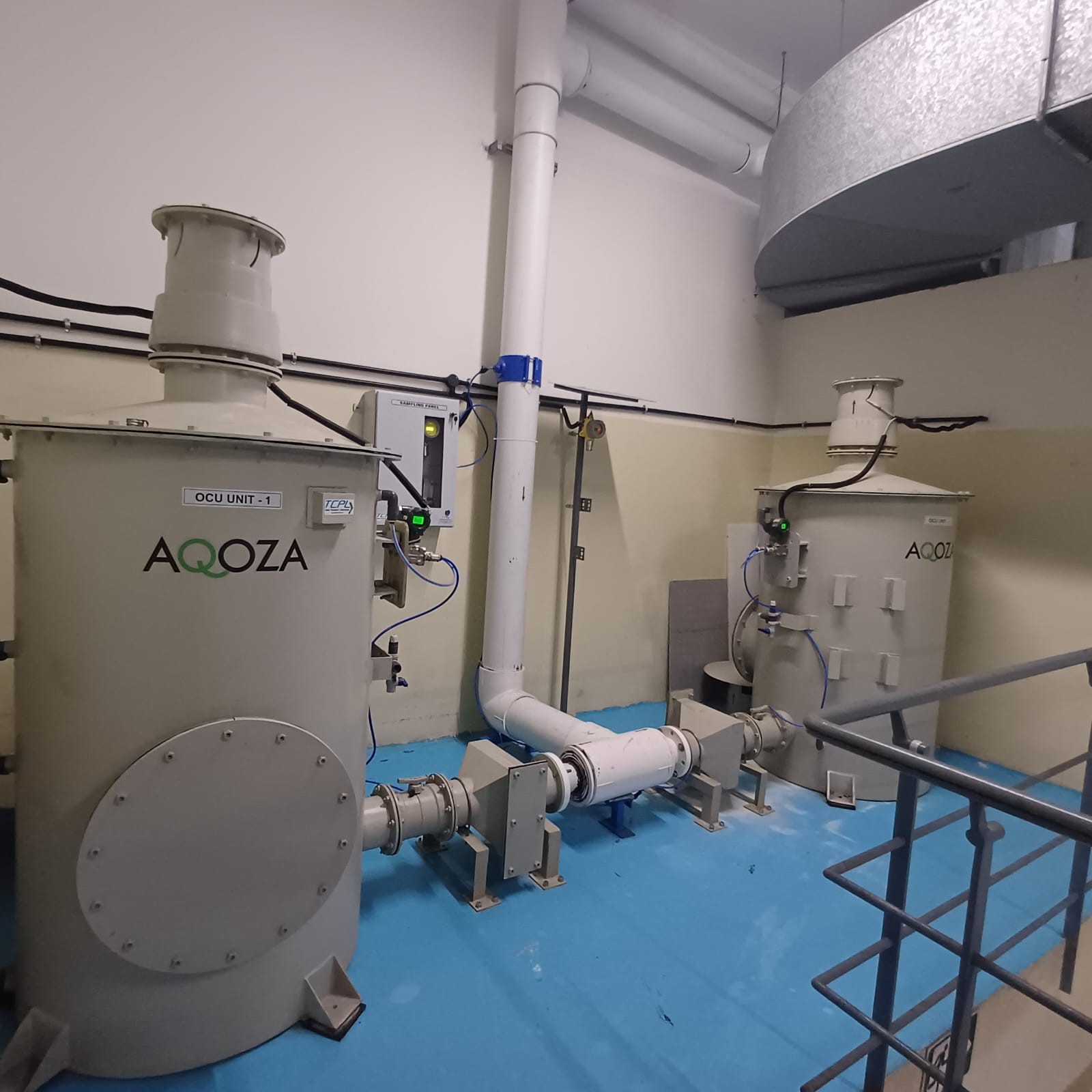Sustainable Solutions for Facility Odor Challenges: A Case Study
Gifty Francis
4 Apr, 2024
Gifty Francis
4 Apr, 2024

Introduction: A global banking, investment, and financial company in Bangalore, India, faced odour nuisance issues from its Sewage Treatment Plant (STP) located in the basement. The odours caused health issues for employees and complaints from nearby individuals, prompting the installation of an odour control unit to address the problem effectively.
Problem: The odours from the 600 KLD STP spread throughout the campus, causing distress to people within and outside the facility. The Odour was impacting the physical and psychological abilities of the employees and causing health problems. The acidic gas emissions were corroding the electrical panels within the STP room, impacting the quality of life and causing property destruction. The STP had ID fans and vents which transferred the odorous air without filtration, leading to odour spread and vent corrosion.
Solution: Following a detailed site visit and audit, the primary sources of odour emissions were identified, the preliminary treatment tanks recorded the Hydrogen Sulphide (H2S) gas concentration at 60-80 ppm.
A 1300 m3/hr capacity odour control unit using coconut-based activated carbon was recommended here. The above system offers 99.9% removal efficiency, maintaining outlet H2S concentrations below 1 ppm after filtration through the system. Furthermore, the total life of the system was 3+ years and it could be easily regenerated with water washing within the life span. Afterwards, the spent media can be conveniently disposed of in a landfill.
The unit was installed within the basement, after covering all the tanks causing the odour, with FRP sheets, thus preventing odour escape, and directing gases into the odour control unit.
High-efficiency, lower-power motors included in the suction fan design minimized electricity costs. The dry scrubber eliminated the need for continuous chemical supply and effluent chemical treatments. It also made high-power ID fans, and vents obsolete and further reduced maintenance requirements. The installed Odour control unit requires minimum to zero operator assistance to function adequately.
The continuous monitoring of the outlet gas using the H2S sensor was taken into the SCADA system for remote monitoring.
Result: The odour control unit completely eliminated odours and prevented corrosion. This improved health and well-being for both employees and nearby residents. There were fewer complaints and a more efficient workforce. The effects of corrosion were completely gone. With the inclusion of the odour control unit, a significant amount of energy was saved by replacing the less efficient ID fans and duct system.
Conclusion: The successful implementation of the odour control unit exemplifies the company's commitment to addressing environmental challenges and improving employee health. By leveraging innovative technologies and tailored solutions, the company achieved significant odour reduction and environmental compliance, contributing to a cleaner and healthier living environment. The company saved money by removing high-flow, high-capacity vents with unsustainable ID fans and implementing an OpEx-friendly odour control unit. This approach not only abated odour problems but also addressed corrosion issues, demonstrating a sustainable and cost-effective solution.

